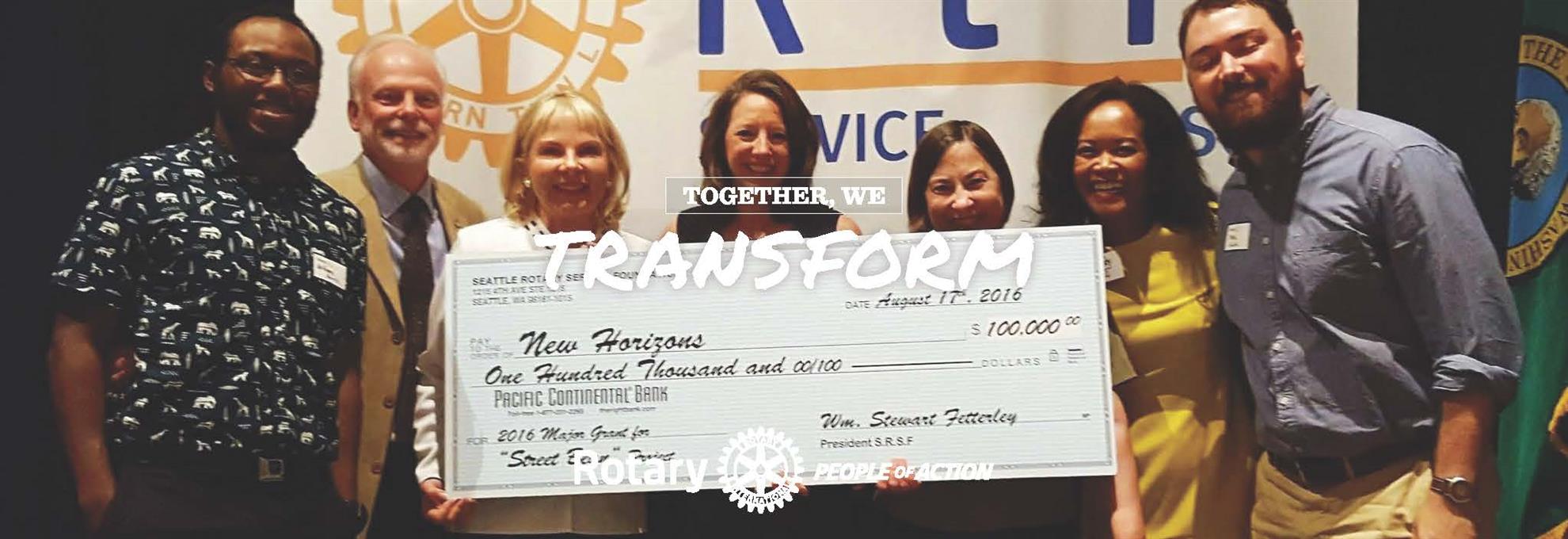Community Projects

Rotary works hard to make a difference. Here are just a few of the important differences our members have created in our community.

During our Centennial year in 2009, our club raised over $4 million for Wellspring Family Services to build the Rotary Support Center for Families. Rotarians made five-year pledges toward this milestone project that enabled Wellspring Family Services to add depth and breadth to programs they currently offer and consider new options to meet emerging needs.
But more than the financial gift, the Rotary Centennial Project was the ultimate example of Service above Self and was truly a partnership in all aspects. Wellspring Family Services continues to be surrounded by talented Rotarians who serve as board members, volunteer monthly in the Baby Boutique, and so much more.
Seattle Rotary #4 members are frequently provided opportunities to stay engaged with the families served by Wellspring Family Services. For additional information, please contact Heather Fitzpatrick, CEO/President, at hfitzpatrick@wellspringfs.org or 206-826-3050.

Ongoing Impact
-
Winners for Life, a program of the Education Committee which honors and provides scholarships for Seattle high school students for achieving academic excellence while overcoming unimaginable odds in their quest to finish school.
-
Rotary First Harvest, a Rotary District 5030 project, solicits large scale donations of produce from growers and packing houses. The produce has cosmetic flaws or is simply a glut on the market. It is moved to partner warehouses, where volunteers sort and pack food for distribution to food banks around the state.
-
In 2013, SRSF provided $100,000 in funding for the Edward Thomas House Medical Respite to convert existing space into exam rooms for patient care and interviews. Edward Thomas House Medical Respite provides beds for homeless men and women with complex medical needs and a high incidence of chemical dependency and/or mental health diagnoses. The grant addressed the lack of exam space which had created a bottleneck for patients accessing nursing care. The grant also met the need for a safe, private, and secure place for patients to meet with mental health care providers. The funds will also created additional refrigerator space to keep intravenous medications and immunizations, as well as making it possible to perform point of care testing on site, rather than having to send patients to other lab facilities for simple diagnostic tests.
-
In 1994, Rotary contributed $500,000 to help the Woodland Park Zoo carry out its vision of promoting lifelong learning about conservation of wildlife and preservation of natural habitats. The result is the Seattle Rotary Education Center, which enabled the Zoo to expand its hands-on, living laboratory with a new 14,000-square-foot education facility. The Center is a major asset as Woodland Park Zoo makes “education” come alive for more than one million visitors a year.
-
In 1971, the club not only bought a fully-equipped Medic I vehicle, but also financed a three-year CPR training program and a training film that was shown in cities around the world where similar programs were being considered. Largely because of Medic I, Seattle is often called “the best place in the world to have a heart attack” – thanks in large part to the role Seattle Rotary played in breathing life into this innovative program nearly 50 years ago.
-
In 1983, KCTS-TV Channel 9, had outgrown its crowded quarters on the University of Washington campus and was about to launch its first-ever capital campaign to build a state-of-the-art facility independent of the University. It was a good cause: a valued community service that brought information, education, and entertainment to millions of viewers, 24 hours a day, 365 days a year. Rotary could make a huge contribution by spearheading the campaign! Originally a goal of $2 million was set, with $750,000 targeted to come from Rotarians. As the campaign gained momentum, it ultimately topped $3 million – with $1 million coming from Rotarians and another million contributed by their companies!